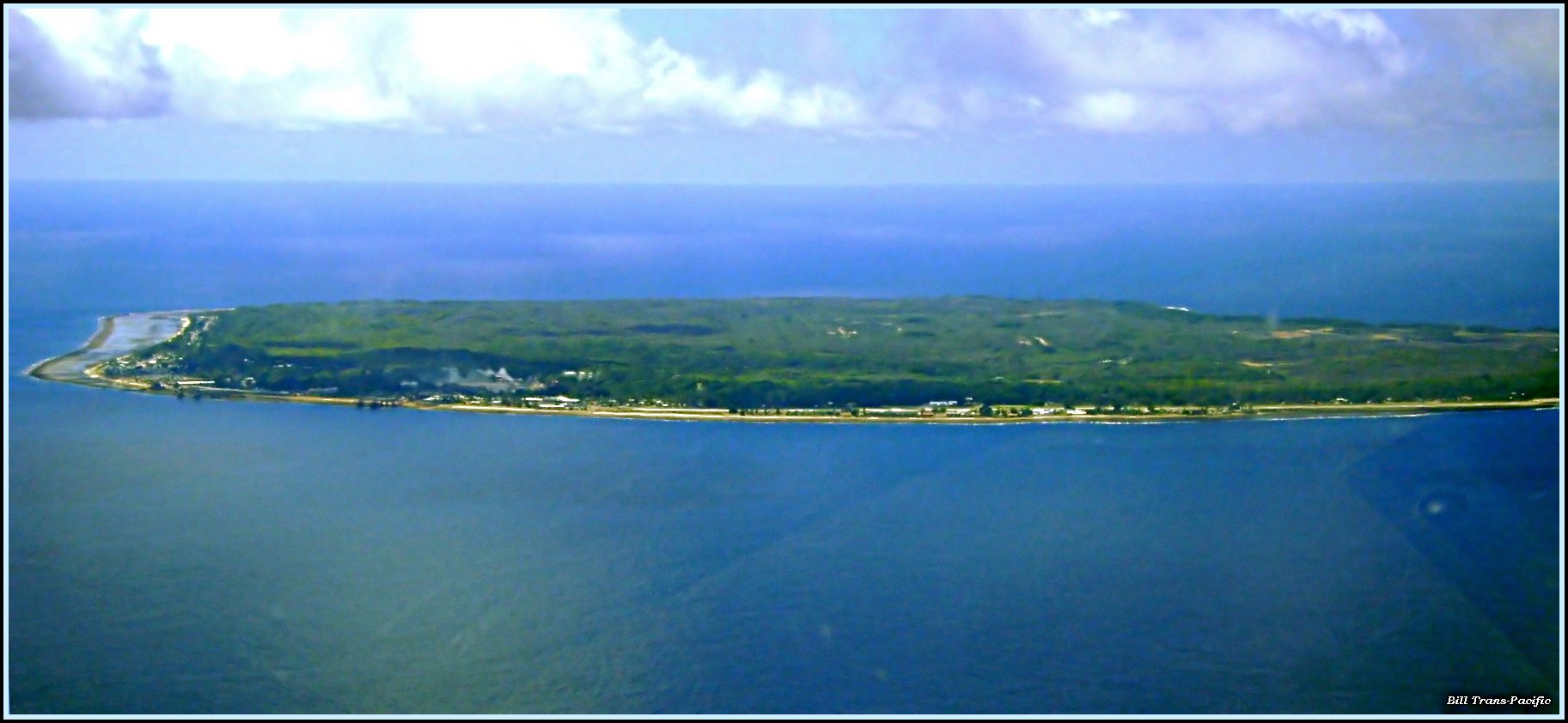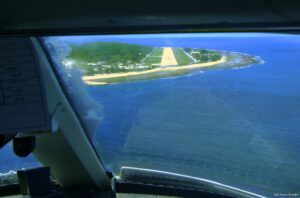Nestled in the Pacific Ocean, Nauru is a small island nation with a long history. Despite its modest size, it boasts a unique cultural heritage and stunning natural beauty. However, getting to Nauru can be a bit of a puzzle due to its remote location.
This article serves as your compass, guiding you through the intricacies of reaching Nauru in 2024. Whether you’re an intrepid explorer seeking adventure or a curious traveler eager to uncover hidden gems, this guide will provide essential insights to make your journey smoother.
Understanding Nauru’s Accessibility
Navigating the Path to Nauru
Reaching Nauru presents a unique set of challenges due to its remote location in the Pacific Ocean. As of 2024, limited flight options remain the primary means of accessing this island nation. Here’s what you need to know:
Limited Flight Options
- Air Travel Only: Currently, the only practical way to reach Nauru is by air. There are no regular maritime routes connecting Nauru to neighboring countries or regions.
- Infrequent Flights: Flights to Nauru are infrequent, often operating on a limited schedule. This scarcity of flights can make planning your trip more challenging, requiring careful consideration of available dates and timings.
Challenges and Costs
- Scheduling Challenges: Due to the limited number of flights, travelers may encounter scheduling difficulties, especially during peak travel seasons or when demand is high.
- Potential Costs: The scarcity of flights to Nauru can sometimes result in higher ticket prices. Travelers should be prepared for potentially elevated costs when booking their flights.
Planning Your Trip to Nauru
Visa Requirements
Traveling Legally to Nauru
If you’re planning a trip to Nauru, understanding the visa requirements is essential to ensure a smooth journey. Here’s what you need to know:
- Necessity of a Visa: All visitors to Nauru require a visa for entry, regardless of the purpose of their visit or the duration of stay. This includes tourists, business travelers, and those visiting friends or family.
- Obtaining a Visa: Visitors have two options for obtaining a visa: online application or upon arrival in Nauru. The online visa application process allows travelers to apply and receive their visa electronically before departing for Nauru. Alternatively, visas can also be obtained upon arrival at Nauru International Airport.
- Required Documentation: When applying for a visa, travelers must ensure that their passport is valid for at least six months beyond their intended date of departure from Nauru. Additionally, they may need to provide proof of sufficient funds to cover their stay and evidence of onward travel arrangements.
Best Time to Visit Nauru (Optional)
Understanding Nauru’s Climate
Nauru’s climate is tropical, with consistently warm temperatures year-round. The island experiences two distinct seasons: the wet season and the dry season.
- Wet Season: The wet season typically occurs from November to February, characterized by increased rainfall and humidity. While lush vegetation flourishes during this time, heavy rain showers and occasional storms may disrupt outdoor activities.
- Dry Season: The dry season spans from March to October, offering more favorable weather conditions for outdoor exploration and leisure activities. With lower humidity and minimal rainfall, this period is often preferred by visitors seeking sunny days and clear skies.
Ideal Travel Seasons
Considering Nauru’s climate and weather patterns, the dry season is generally considered the best time to visit the island. Here’s why:
- Comfortable Temperatures: During the dry season, temperatures are pleasant and moderate, ranging from around 25°C to 30°C (77°F to 86°F). This makes outdoor adventures, beach outings, and sightseeing more enjoyable.
- Optimal Conditions for Diving and Snorkeling: With calm seas and excellent visibility, the dry season offers ideal conditions for diving and snorkeling enthusiasts to explore Nauru’s vibrant underwater world.
- Cultural and Sporting Events: Additionally, the dry season often coincides with various cultural festivals and sporting events on the island. Visitors can immerse themselves in local traditions and celebrations, adding an enriching dimension to their Nauru experience.
Booking Your Flight to Nauru
1. Main Gateway Airports
When planning your journey to Nauru, it’s essential to consider the primary airports that serve as gateways to this remote island nation. While direct flights to Nauru are limited, travelers can connect through various regional hubs to reach their destination. Here are the main gateway airports for flights to Nauru:
- Brisbane Airport (BNE):
- Located in Queensland, Australia, Brisbane Airport serves as a major international hub for flights to the Pacific region. Several airlines offer connecting flights to Nauru from Brisbane.
- Nadi International Airport (NAN):
- Situated in Nadi, Fiji, Nadi International Airport is a key hub for flights between the Pacific islands and other parts of the world. Travelers can find connecting flights to Nauru from Nadi.
- Nauru International Airport (INU):
- Nauru International Airport, located on the island itself, serves as the primary entry point for visitors arriving by air. While direct flights to Nauru may be limited, the airport facilitates connections from regional hubs.
2. Airlines Serving Nauru
Exploring Your Airline Options
When planning your trip to Nauru, it’s crucial to be aware of the main airlines that operate flights to this remote island destination. While options may be limited due to Nauru’s small size, there are still reliable carriers to consider. Here’s a look at the primary airline serving Nauru:
- Nauru Airlines:
- Nauru Airlines, the national carrier of Nauru, plays a significant role in connecting the island nation with regional and international destinations. The airline operates regular flights to and from Nauru International Airport, facilitating travel for both tourists and residents alike.
- Services Offered: Nauru Airlines offers a range of services to ensure a comfortable and pleasant travel experience for passengers. These services may include in-flight entertainment, refreshments, and attentive customer service.
- Destinations: While Nauru Airlines primarily focuses on serving routes to and from Nauru, the airline also operates flights to select destinations in the Pacific region, such as Brisbane, Honiara, and Tarawa.
- Booking Options: Travelers can book flights with Nauru Airlines through various channels, including the airline’s official website, travel agencies, and online booking platforms. It’s advisable to book tickets in advance, especially during peak travel seasons, to secure preferred dates and seats.
3. Finding Flights and Comparing Prices
Exploring Your Options
When it comes to booking flights to Nauru, it’s essential to explore different avenues to find the best deals and options that suit your preferences. Here’s how you can efficiently find flights and compare prices:
- Flight Search Engines:
- Utilize popular flight search engines such as Google Flights, Skyscanner, or Kayak to compare prices from various airlines and travel agencies.
- These platforms allow you to enter your travel dates and destination to browse through available flight options, filter results based on preferences, and easily compare prices across different carriers.
- Travel Websites:
- Visit travel websites like Expedia, Booking.com, or TripAdvisor to search for flights to Nauru and explore package deals that include flights, accommodation, and other amenities.
- These websites often offer exclusive deals and discounts, making them a convenient option for budget-conscious travelers.
- Direct Booking with Airlines:
- Consider contacting Nauru Airlines directly through their official website or customer service hotline to inquire about flight options and pricing.
- While direct booking may not always offer the cheapest fares, it can be advantageous in terms of flexibility and personalized assistance, especially for specific travel needs or preferences.
Tips for Finding the Best Deals
- Flexibility with Dates: Remain flexible with your travel dates to take advantage of potential price fluctuations and special promotions.
- Book in Advance: Aim to book your flights well in advance, as last-minute bookings may result in higher fares, especially during peak travel seasons.
- Sign up for Alerts: Subscribe to fare alerts and newsletters from airlines and travel websites to stay informed about promotional offers and price drops.
Alternative Travel Options (if applicable)
Exploring Other Avenues
While commercial flights remain the primary means of reaching Nauru, there are alternative travel options to consider, albeit with certain limitations and higher costs.
- Chartering a Private Plane:
- For those seeking a more luxurious or customizable travel experience, chartering a private plane may be an option.
- Private charters offer flexibility in terms of departure times and routes, allowing travelers to tailor their journey to their specific needs and preferences.
- However, it’s important to note that chartering a private plane can be significantly more expensive than flying commercially, making it an impractical choice for most travelers.
- Cruise Ships or Yachts:
- In some cases, travelers may explore the possibility of reaching Nauru by sea, either through cruise ships or private yachts.
- While cruising offers a leisurely and scenic travel experience, it’s essential to research whether any cruise lines include Nauru in their itineraries and to consider the duration of the voyage.
- Similarly, chartering a yacht may appeal to those with a taste for adventure and a desire to explore the Pacific waters. However, this option is typically reserved for those with significant financial resources due to the high costs involved.
Considerations and Limitations
- Cost Factor: Alternative travel options such as private plane charters or yacht rentals are typically reserved for affluent travelers due to their high costs.
- Accessibility Challenges: Nauru’s remote location and limited infrastructure may present challenges for alternative travel methods, such as accessing suitable docking facilities for yachts.
- Limited Availability: Availability of private plane charters and yacht rentals may be limited, especially during certain times of the year or in response to logistical constraints.
Essential Arrival Information
1. Nauru International Airport (INU)
Gateway to Nauru
- Description: Nauru International Airport (INU) serves as the main gateway to the island nation of Nauru. Despite its modest size, the airport provides essential facilities and services to arriving passengers.
- Facilities and Amenities:
- Passenger Terminal: The airport features a modern passenger terminal equipped with basic amenities such as check-in counters, baggage claim areas, and seating areas.
- Dining Options: While limited, there are dining options available at the airport, including cafes and snack bars offering refreshments for travelers.
- Transportation: Ground transportation options such as taxis and rental car services are available outside the terminal for onward travel to accommodations or other destinations on the island.
2. Customs and Immigration Procedures
Navigating Arrival Formalities
- Arrival Process:
- Upon arrival at Nauru International Airport, travelers are required to proceed through immigration and customs procedures.
- Immigration officers will verify passports, visas, and other travel documents, granting entry to eligible visitors.
- Customs officials may conduct routine inspections of luggage to ensure compliance with import regulations and to prevent the entry of prohibited items.
- Documentation Required:
- Passengers should ensure they have all necessary documentation ready for inspection, including valid passports, visas (if required), and any supporting paperwork.
- It’s essential to declare any restricted or dutiable items to customs officials upon arrival to avoid penalties or confiscation.
Additional Tips for Traveling to Nauru
1. Currency Exchange
Managing Your Finances
- Currency Exchange: It’s advisable to exchange currency before arriving in Nauru or at the airport upon arrival.
- Currency: The official currency of Nauru is the Australian Dollar (AUD), which is widely accepted throughout the country.
2. Language Considerations
Communicating in Nauru
- Official Languages: English and Nauruan are the official languages spoken in Nauru.
- Basic Phrases: While English is commonly spoken, learning a few basic Nauruan phrases such as greetings can enhance your cultural experience.
3. Local Transportation
Getting Around Nauru
- Transportation Options:
- Taxis: Taxis are available for transportation around the island, offering convenient and flexible travel options.
- Car Rentals: Renting a car provides independence and flexibility for exploring Nauru at your own pace.
- Walking: Nauru is a small island, and many attractions are within walking distance in populated areas.
Conclusion
In this guide, we’ve covered essential information for planning your trip to Nauru. From understanding accessibility and booking flights to navigating arrival procedures and local transportation, you’re now equipped with the knowledge to embark on your journey with confidence.
Despite the travel challenges posed by Nauru’s remote location, the allure of this island nation’s unique culture, natural landscapes, and historical significance makes it a destination worth exploring.
FAQ (Frequently Asked Questions)
Q: How often are there flights to Nauru?
A: Flights to Nauru are limited and may operate on an irregular schedule. It’s recommended to check with airlines for the latest updates and availability.
Q: Is it expensive to travel to Nauru?
A: Traveling to Nauru can be costly due to limited flight options. We recommend using flight search engines to compare prices and find the best deals.
Q: What are the best things to do in Nauru?
A: Some highlights of Nauru include exploring Buada Lagoon, learning about its phosphate mining history, and experiencing its unique culture. For more detailed information, further research is recommended.
Please note that visa requirements and travel regulations for Nauru may change. It’s essential to consult official sources or government websites for the latest information before planning your trip.






